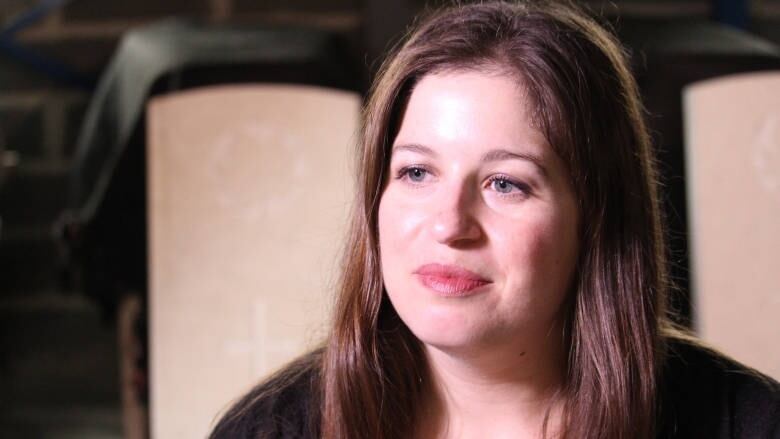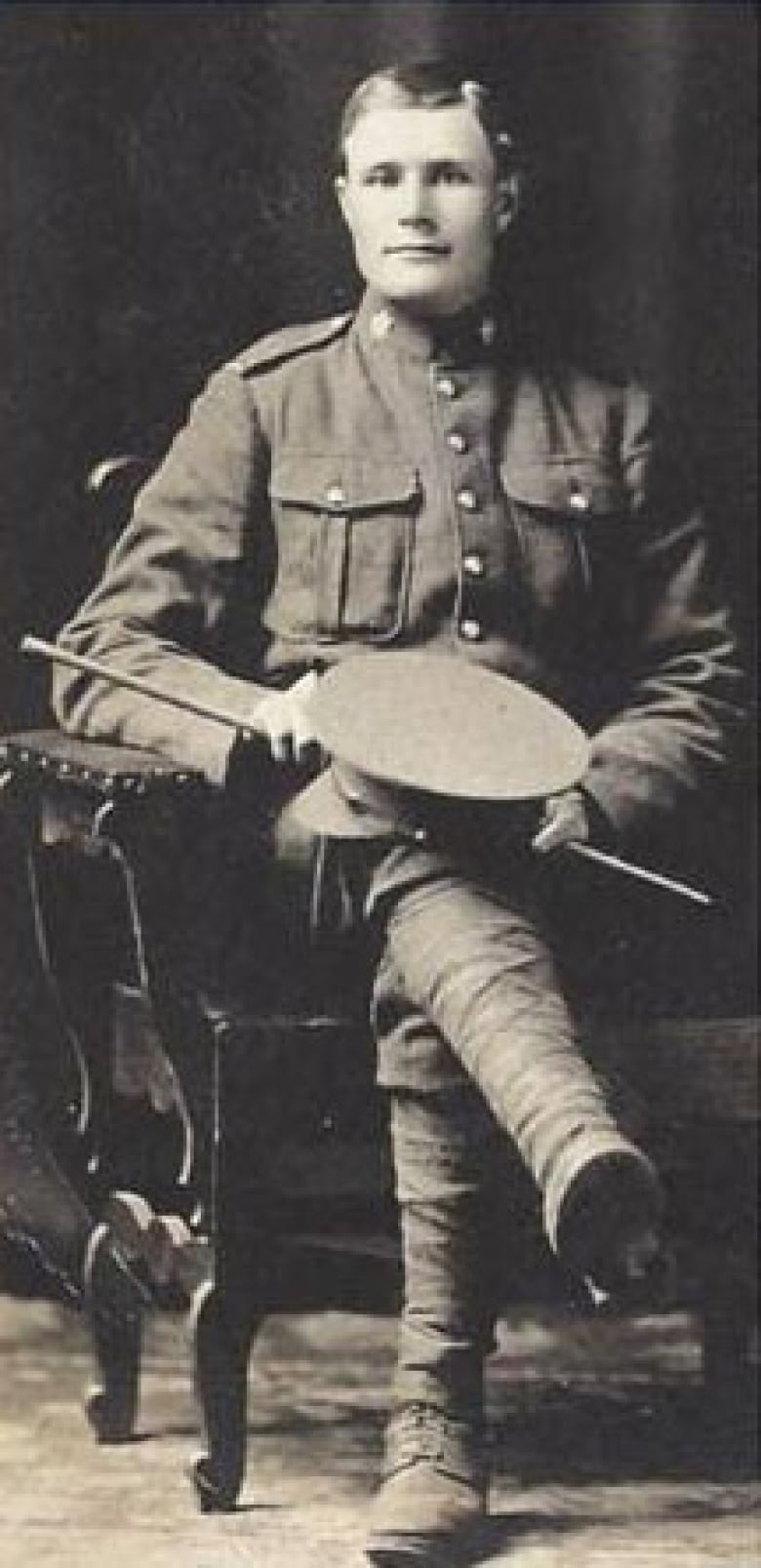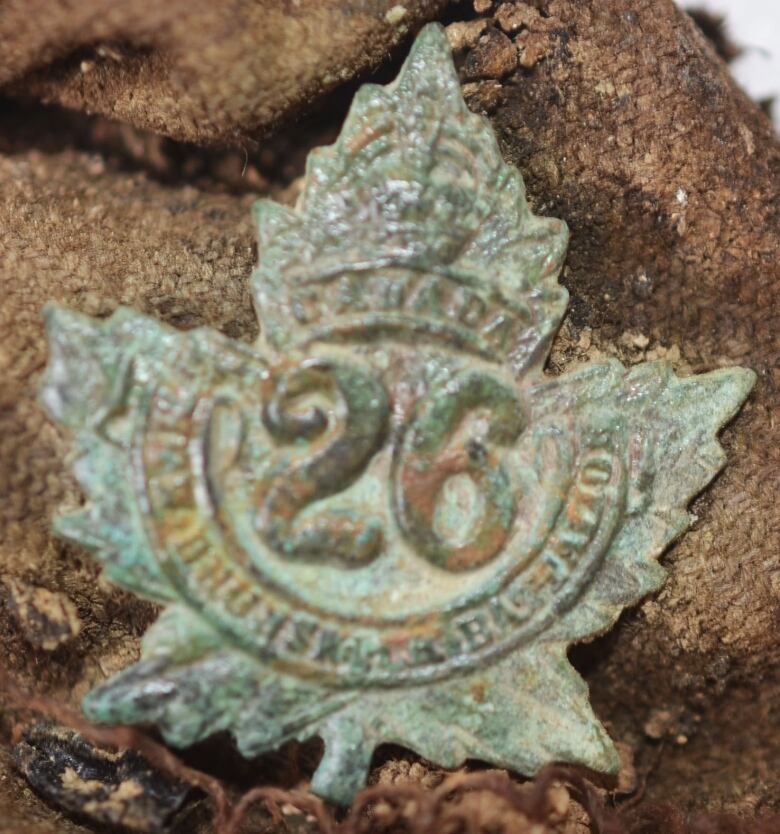Solving century-old mysteries all in a day's work for Moncton native
Forensic anthropologist Sarah Lockyer says it's an honour to help identify remains of soldiers for DND

ForMonctonnative SarahLockyer, solving a century-old mystery is all in a day's work.
Lockyer, a forensic anthropologist and the Casualty Identification Co-ordinator at the Department of National Defence in Ottawa, helped identify the remains of a New Brunswick soldier whowas killed in battle in northern France during the First World War.
Pte. John (Jack) Henry Thomas, a 28-year-oldfarmer fromBirch Ridge in Victoria County, will be laid to rest this summer in the presence ofrelatives and members of his26thCanadian Infantry Battalion (New Brunswick).
"If it is a positive outcome like it was in this case, it's very rewarding," said Lockyer. "You can't help but smile and know you've done something very right that day."
But her work is far from over, she said, noting there are approximately 20,000 other Canadian First World War soldierswith no known graves.
She said her work is important, not only to identify soldiers who have made the ultimate sacrifice for their country but also to reassure current members of the armed forces thatif anything ever happenedto them "there would be somebody down the linedoing everything that they possibly could to try and identify them and give themproperburial."

Thomas was killedon Aug.19, 1917, during the Battle of Hill 70 one day shy of his one-year anniversary of enlisting in Saint John. His body was never recovered.
On Monday, the Department of National Defence and Canadian Armed Forcesannounced one of three sets of skeletal remains found at a construction site in Lens, France, in August 2016 hadbeen confirmed as those of Thomas.
The other two have not yet been identified, said Lockyer.
When remains are found, the police are called infirst to ensure the death is not suspicious, she said.They're usually able to quickly determine they're dealing with war dead, due to the types of artifactsfound with them, she said.
In this case, the artifacts includedgeneral service buttons, ammunition, and a26thCanadian Infantry Battalion (New Brunswick) collar badge.
Once foul play has been ruled out, the Commonwealth War Graves Commission takes possession of the remains. When the commission determinedthe nationality, it contacted the Department of National Defence.

Lockyer'smilitary colleagues then compiledthemilitary history of the area where the remains were discovered to determine who might have been there.
Thomas' collar badge was an important clue regarding who in the group of missing soldiers it couldbe, she said.
It sort of ensures thatPte. Thomas's story continues to be told and he continues to live on in his family's memories.- Sarah Lockyer, forensic anthropologist
Twice a year,Lockyertravelsto France to conduct anthropological analysis on any remains found. She gets anage range and aheight range to compare to the list of potential candidates of soldiers who went missing in the area, which helps eliminate those who don't match the parameters.
"Then we start doing geneaology to hopefully find a DNA donor and that's what happened with Pte. Thomas."
She tracked down one of his relatives who was willing to provide a DNA sample and it was a match.

The reactions of relatives varies,said Lockyer. But usually it's "a happy experience much more than a sad one because their family member is no longer missing."
Thomas' unnamed relative immediately knew who Lockyer was talking about and was "quite excited to be part of the process and to help out."
The experience also allowed her to connect with family members she never knew existed, she said.
"When this is the outcome it's even more rewarding because it sort of ensures that Pte. Thomas's story continues to be told and he continues to live on in his family's memories."
The DNA donor, two next of kin and some other relatives are planning to attend the burial Aug. 23 at the Commonwealth War Graves Commission's LoosBritish Cemetery outsideLoos-en-Gohelle, France, said Lockyer.
The26thCanadian Infantry Battalion (New Brunswick) will also send abearer party "so that they can bury one of their own," she said.
The service, scheduled to be held at 1:30 p.m. Central European Time, will be open to the public.
With files from Information Morning Moncton












_(720p).jpg)


 OFFICIAL HD MUSIC VIDEO.jpg)
.jpg)



























































































